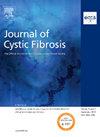囊性纤维化患者对 Elexacaftor/Tezacaftor/Ivacaftor 反应的异质性。
IF 5.4
2区 医学
Q1 RESPIRATORY SYSTEM
引用次数: 0
摘要
背景:CFTR 通道的高效调节剂已被证明能显著影响疾病的进展和治疗效果。然而,真实世界的数据表明,接受治疗的所有患者的临床获益程度并不一样。我们的目的是评估一组接受 Elexacaftor-Tezacaftor-Ivacaftor (ETI) 三联疗法的患者治疗反应的变异性(以 6 个月的汗液氯化物浓度、一秒钟内用力呼气容积 [ppFEV1]、体重指数 [BMI] 和 CF 问卷-修订版 [CFQ-R] 呼吸领域评分的变化来定义),并确定潜在的预测因素:这是一项单中心、前瞻性队列研究,在意大利的一个主要中心招募了成年 CF 患者。我们使用线性回归模型确定了一系列潜在的预测因素(包括 CFTR 基因型、性别、年龄和基线临床特征),并估计了治疗反应的变异性:研究共纳入 211 名患者(中位年龄:29 岁,范围:12-58 岁)。与基线相比的中位变化(10-90 百分位数)为- 汗液氯化物浓度为 56 mEq/L (-76; -27),ppFEV1 为 +14.5 分 (2.5; 32.0),BMI 为 +0.33 个标准差分数 (-0.13; 1.05),CFQ-R 呼吸领域分数为 +17 分 (0; 39)。所选预测因子解释了 23% 的汗液氯化物浓度变化变异性、18% 的 ppFEV1 变化变异性、39% 的 BMI 变化变异性和 65% 的 CFQ-R 变化变异性:本研究强调了 ETI 治疗反应的高度异质性,而疾病的基线特征只能部分解释这种异质性。本文章由计算机程序翻译,如有差异,请以英文原文为准。
Heterogeneity in response to Elexacaftor/Tezacaftor/Ivacaftor in people with cystic fibrosis
Background
Highly effective modulators of the CFTR channel have been demonstrated to dramatically impact disease progression and outcome. However, real-world data indicates that the magnitude of the clinical benefit is not equal among all patients receiving the treatment. We aimed to assess the variability in treatment response (as defined by the 6-month change in sweat chloride concentration, forced expiratory volume in one second [ppFEV1], body mass index [BMI], and CF Questionnaire-Revised [CFQ-R] respiratory domain score) and identify potential predictors in a group of patients receiving Elexacaftor-Tezacaftor-Ivacaftor (ETI) triple combination therapy.
Methods
This was a single-center, prospective cohort study enrolling adults with CF at a major center in Italy. We used linear regression models to identify a set of potential predictors (including CFTR genotype, sex, age, and baseline clinical characteristics) and estimate the variability in treatment response.
Results
The study included 211 patients (median age: 29 years, range: 12–58). Median changes (10–90th percentile) from baseline were: - 56 mEq/L (–76; –27) for sweat chloride concentration, +14.5 points (2.5; 32.0) for ppFEV1, +0.33 standard deviation scores (–0.13; 1.05) for BMI and +17 points (0; 39) for the CFQ-R respiratory domain score. The selected predictors explained 23 % of the variability in sweat chloride concentration changes, 18 % of the variability in ppFEV1 changes, 39 % of the variability in BMI changes, and 65 % of the variability in CFQ-R changes.
Conclusions
This study highlights a high level of heterogeneity in treatment response to ETI, which can only be partially explained by the baseline characteristics of the disease.
求助全文
通过发布文献求助,成功后即可免费获取论文全文。
去求助
来源期刊

Journal of Cystic Fibrosis
医学-呼吸系统
CiteScore
10.10
自引率
13.50%
发文量
1361
审稿时长
50 days
期刊介绍:
The Journal of Cystic Fibrosis is the official journal of the European Cystic Fibrosis Society. The journal is devoted to promoting the research and treatment of cystic fibrosis. To this end the journal publishes original scientific articles, editorials, case reports, short communications and other information relevant to cystic fibrosis. The journal also publishes news and articles concerning the activities and policies of the ECFS as well as those of other societies related the ECFS.
 求助内容:
求助内容: 应助结果提醒方式:
应助结果提醒方式:


